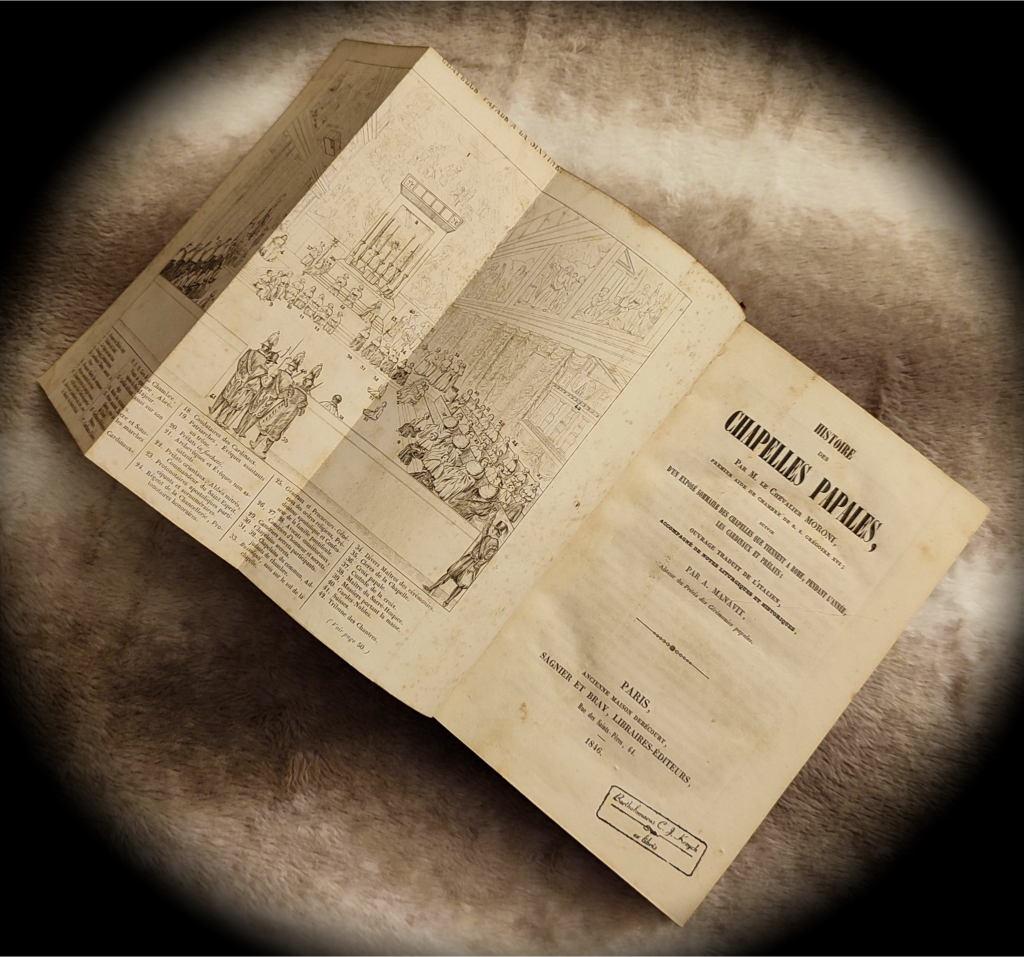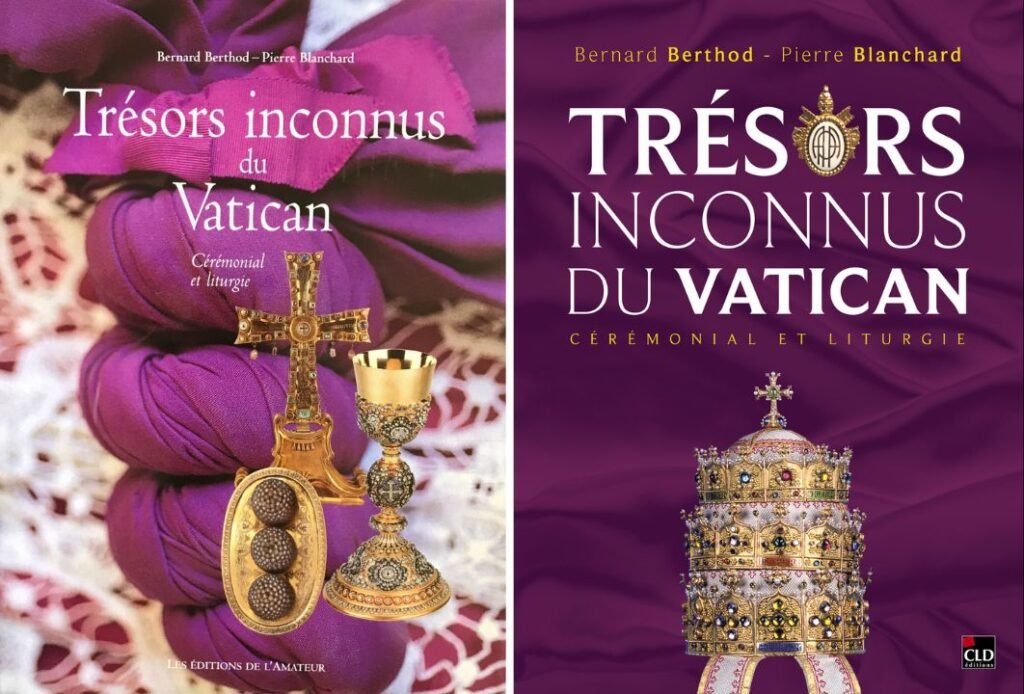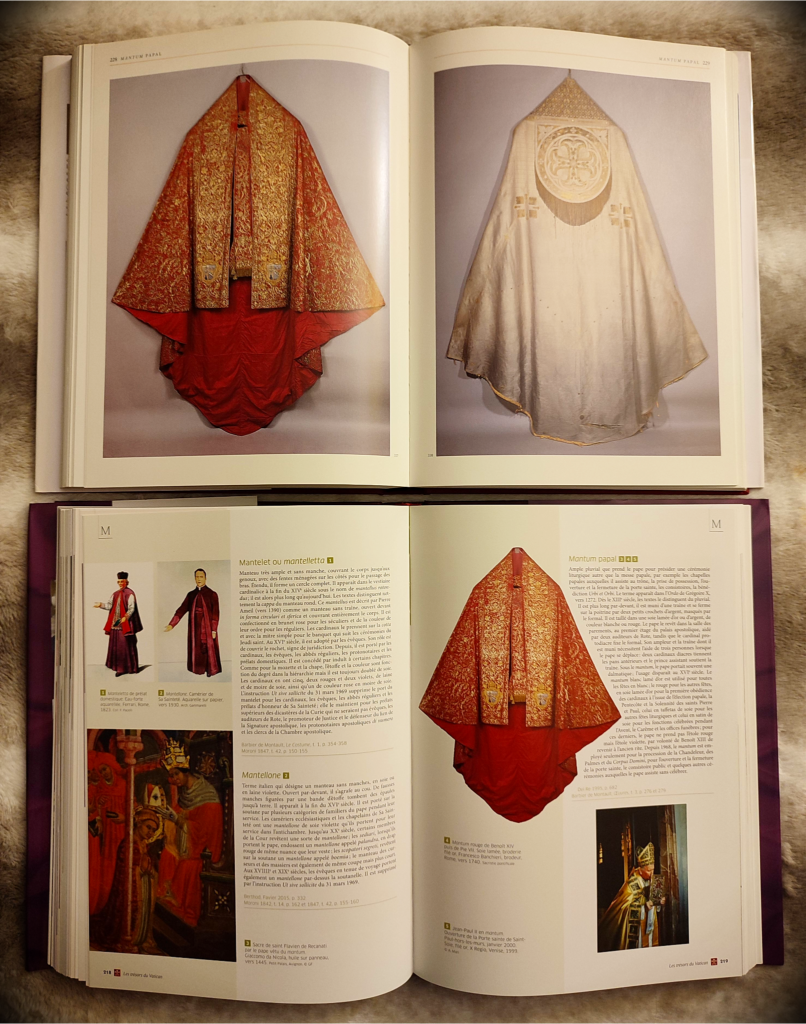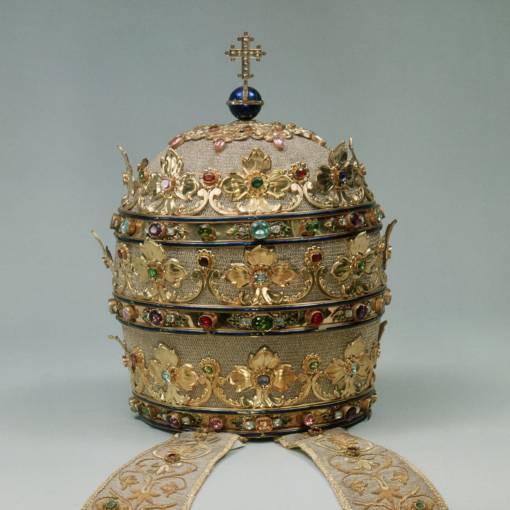This text was originally published in Polish. This is our own translation of it. We are not native speakers, so if any reader finds any errors or linguistic inaccuracies, we will be grateful for reporting them.
Die 31 decembris Anno Domini 2023 Sancti Silvestri Papæ et Confessoris Dominica Infra Octavam Nativitatis
Despite the existence of an extremely rich literature – both academic and popular – on the Vatican and the papacy, relatively few works are devoted exclusively to the papal liturgy in genere. This is especially true of the historical-ceremonial context. Yes, there are numerous and valuable studies devoted, for example, to specific liturgical aspects, such as the college of papal masters of ceremonies, the (post-)Renaissance ceremonials of the Roman Curia, the Roman orders (Ordines Romani) or the rites of the pope’s funeral – but these are mostly specialized publications that can be difficult and challenging reading, especially for those unfamiliar with the standards of academic works and discussions. In addition, they do not offer the „standard” reader a comprehensive, and as accessible as possible, picture of the papal liturgy, above all as it survived until the mid-1960s.
To help those who are interested avoid hours of searching and time-consuming browsing through lists of publications, their descriptions and reviews, we want to provide a list, in our opinion, of the three best books devoted to the papal liturgy in general. „Best” meaning: 1) as wide-ranging in subject matter and content as possible, thus giving a certain picture of the totality of what the papal liturgy is (was); 2) accessible and explaining the issues covered without too complex intricacies, thus with an „entry threshold” that any reader with a basic knowledge of the liturgy and the papacy should be able to cope with; 3) being truly valuable positions, offering a solid dose of knowledge and abundantly referring to further detailed literature.
I. „PAPAL CHAPELS” BY GAETANO MORONI
There are at least a few noteworthy works from earlier years whose authors have attempted to discuss the customs and ceremonies of the Papal Court throughout the liturgical year, to mention only the most famous, namely Prelate Xavier Barbier de Montault (1830-1901) and Francesco Cancellieri (1751-1826). However, it was the latter’s apprentice, Gaetano Moroni (1802-1883), who wrote a work that even today can be successfully regarded as a point de référence. We are, of course, talking about the famous Dizionario di erudizione storico-ecclesiastica published between 1840 and 1861 (Venezia: Dalla Tipografia Emiliana).

Source: Finarte (Milano).
This dictionary consists of 103 volumes, in which many entries are devoted to the papal liturgy. One of them, dedicated to Papal Chapels (the entry Cappelle pontificie, o papali, vol. VIII, from p. 114 and vol. IX to p. 122, both volumes published in 1841 in Venice), lived to see a separate edition (also in 1841 by the same publisher) entitled Le cappelle pontificie, cardinalizie e prelatizie. Opera storico-liturgica.
The book was published 5 years later in French under the title Histoire des chapelles papales (Paris 1846), translated by Augustin Manavit, who just 4 years earlier had published the Précis des cérémonies papales (a description of Holy Week ceremonies in Rome), several hundred pages long.

Source: CR collection.
The French edition is the one to recommend. First, because of the slightly clearer composition; second, because of the translator’s corrections and additions to the original text; third, because of the extensive appendix from the translator (numerous notes), in which many interesting threads related to the papal liturgy are covered.
Source: CR collection.
The work is divided into three main parts. The first discusses the basic concepts, places, people and functions associated with Papal Chapels. The second describes „extraordinary” Papal Chapels, i.e. those that are held irregularly, only in connection with specific events, such as the election and coronation of a new pope, the funeral of a cardinal or the opening of the Holy Door in the Jubilee Year. The third and longest part is a lecture of the Papal Chapels during the year in chronological order from January to December. The final, fourth part is devoted to the cardinal and prelate chapels.
The French edition closes with notes from the translator to the first three sections, in which he addresses topics covered by Moroni in other entries in the Dizionario, hence absent from the original edition. These are very valuable and pertinent additions, for which a reader unfamiliar with the rites and traditions of the Papal Court will be grateful. The translator addresses such issues as the papal family, sedia gestatoria, pallium, Laudes Regiae, pregustation, asterisk, cotta, papal prerogatives and many others.
II. „LITURGY AND CEREMONIES AT THE PAPAL COURT” BY ULRICH NERSINGER
Ulrich Nersinger (born 1957) is a world-renowned Vatican scholar, author of at least 25 books on the Vatican and a huge number of texts of various kinds (scientific, popular science, journalism). Not only does he have vast historical knowledge, but he also spent many years studying and working in Rome, including as a postulator in the beatification and canonization process. He has written the only contemporary work on the papal liturgy (especially prior to the reforms introduced during and after Vatican II) that attempts to cover such a broad subject matter in such an erudite manner. It is a two-volume work entitled Liturgien und Zeremonien am Päpstlichen Hof (Bonn, vol. I in 2010, vol. II in 2011).

Source: Orbis Catholicus Secundus / John Sonnen.

Source: Osservatore Romano / Orbis Catholicus Secundus (John Sonnen).
Nersinger’s work is undoubtedly unique. John Sonnen does not hesitate to refer to it as the „New Ultimate Book on Papal Liturgies” and the „Mother of All Books on Papal Liturgies.” It seems that these words will not be too much of an exaggeration, as long as we take the work of the German journalist as a starting point for further detailed study and research on the various topics he covers. The substantive content is of a high standard, however, many topics have been treated in a condensed manner (sometimes too much), which is also due to the richness of the content – the numbers speak for themselves: volume one has 539 pages, 267 photographs or illustrations and 824 items in the bibliography, while volume two has 509 pages, 172 photographs or illustrations and 90 additional items in the bibliography. This brings the total to 1,048 pages, 439 photographs or illustrations (unfortunately, all in black and white, most of them small in size) and 914 bibliographic items (divided into several categories). The work the author has done deserves recognition and, above all, careful reading. This is a book that provides a broad and multifaceted view of the liturgy and customs of the Papal Court as they have persisted especially in the 20th century.

Source: CR collection.

Source: CR collection.
The contents of the first volume are divided into nine chapters, in which the author discusses in turn: the members and representatives of the Papal Court (I); the rites for the election of popes (conclave) over the centuries (II); the coronation ceremonies of popes and the tiara (III); the history of the pallium (primarily papal) and the rites associated with its execution and imposition on metropolitans (IV); papal ferulas and crosses (V); rites associated with the Pope’s taking possesion of the Lateran Palace and Basilica (VI); the station liturgy and related rites during the liturgical year, especially during Lent and Holy Week (VII); ceremonies for the solemn Mass celebrated by the Pope (VIII); services and processions with the Blessed Sacrament (IX). Three chapters are accompanied by supplements: the first chapter includes text on the Prefecture of the Papal Household after Benedict XVI began his pontificate in 2005; the second chapter includes a plan of the conclave of the 19th century (list of cardinals and their assigned destinations, sketches and maps) – while the eighth chapter includes a calendar of papal celebrations from 1863. The whole is rounded out by appendices showing the changes the Papal Court underwent just after the Second Vatican Council (changed to the Papal House in 1968 by the decision of Pope Paul VI), as well as the organization of the Papal House in 2005 after the election of Joseph Cardinal Ratzinger to the See of Peter.
Source: CR collection.
Source: CR collection.
The second volume is a continuation and is divided into seven chapters (from X to XVI with appendices), in which the author addresses the following topics: rites and ceremonies associated with the cardinal dignity (X); beatifications and canonizations (XI); rites, rituals and customs associated with the Great Jubilees (XII); papal gifts and honors, such as the Golden Rose, the Agnus Dei and the Stocco e Berrettone (XIII); Chinea (XIV); papal audiences, their ceremonies and proceedings (XV); rites related to the death and funeral of the pope (XVI); papal vehicles (XVII). Also included at the end of the work are pertinent appendices – documents relating to the reform of papal liturgies, as well as the rites and customs of the Papal Court introduced before and after Vatican II (one of the appendices is also organ partitions of pieces played in St. Peter’s Basilica on silver trumpets). A factual index for both volumes completes the whole.
III. „THE UNKNOWN TREASURY OF THE VATICAN. LITURGY AND CEREMONIES” BY BERNARD BERTHOD AND PIERRE BLANCHARD
For those, however, who prefer visual material to persistent reading, the best position will be the study by Bernard Berthod (lead author) and Pierre Blanchard, not overtly titled Trésors inconnus du Vatican. Cérémonial et liturgie (first edition in 2001; second, revised and updated, in 2021; both in Paris, but in two different publishers). It is a richly illustrated dictionary of the most important terms related to the papal liturgy, especially in its historical and ceremonial dimensions. Hand in hand with the quality of the editorial side is the substantive content based on a rich bibliography. Due to Berthod’s position, his contacts and the access he has to various archives and collections, both editions contain unique photographs, including from the Treasury of the Apostolic Sacristy and from the archives of the Office of Papal Liturgical Celebrations.

Source: publishers.
Both editions include ca: 350 pages, 350 entries and 800 illustrations, as well as a factual bibliography. The authors’ attention is focused primarily on members of the Papal Court (House) and items used during papal liturgies and other events related to the official ceremonial of the Holy See. What is valuable, however, is that the historical and practical context is outlined for most of the entries. As with the other two entries, this book is a treasure trove of knowledge.

Source: CR collection.

Source: CR collection.

Source: CR collection.
Source: CR collection.
Source: CR collection.
There are many such albums devoted to the treasures stored in the Treasury of the Apostolic Sacristy, especially the papal vestments and insignia – just to mention the studies by Luciano Orsini and Marzia Cataldi Gallo or various types of (post)exhibition catalogs – but none of them is as comprehensive and at the same time as meticulously documented as Berthod and Blanchard’s publication. It is a must-have item in the home library of any enthusiast of the papal liturgy.
APPENDIX
In this type of compilation, it is impossible not to mention – in many respects a first-rate and œuvre de référence – Agostino Paravicini Bagliani’s work Il corpo del papa (Turin 1994), translated into French (Paris 1997), German (Munich 1997) and English (Chicago 1999).

Source: publishers.
The author explains in depth many issues concerning the person and office of the Pope, especially in the context of the rites and ceremonies concerning his body, both in the literal and symbolic sense. The Pope’s Body is a historical work, which means that it does not only contain descriptions of specific rites and customs, but also an explanation of them, with special attention to the sources and motives of their origin. In other words: it is impossible to understand the papal liturgy in its mature form (15th-20th century) without learning about the history of the papacy in the Middle Ages (10th-14th century). Bagliani’s book is actually a model work here.
RECOMMENDED VIDEOS
RECOMMENDED READINGS
- Gaetano Moroni, Dizionario di erudizione storico-ecclesiastica da San Pietro sino ai nostri giorni, Tipografia Emiliana, Venezia 1840-1861.
- Niccolò Del Re (red.), Mondo Vaticano. Passato e Presente, Libreria Editrice Vaticana, Città del Vaticano 1995.
- B.K. Krzych, Wstępny zestaw literatury źródłowej do badań nad liturgią papieską, „Liturgia Sacra” nr 2(38)/2011, s. 333-347.





